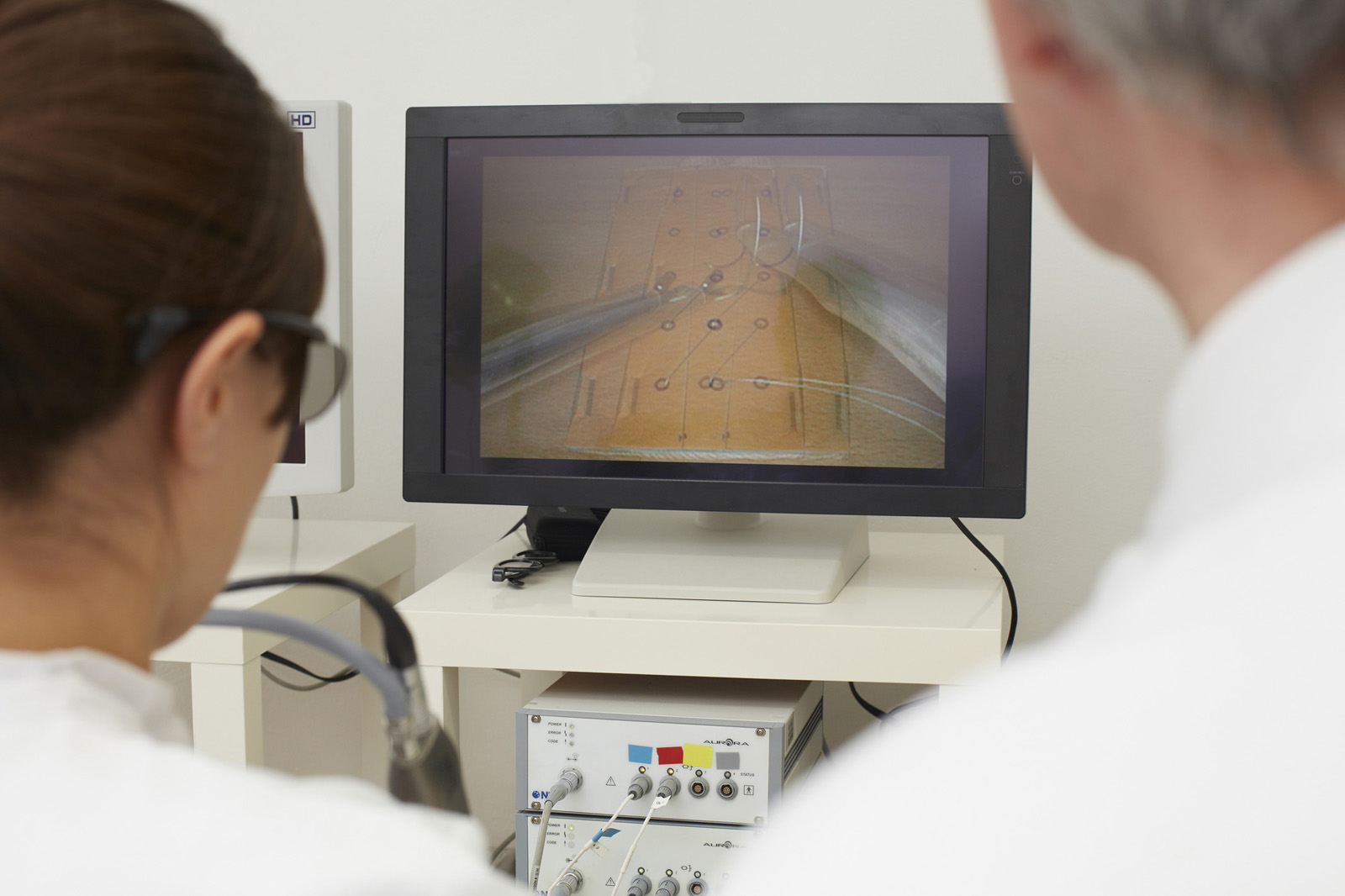New opportunities for 3D technology in medicine
Until now, physicians have largely been skeptical of the advantages of 3D technology. But this may be about to change: the findings of a new study show that even experienced surgeons stand to benefit from the third dimension.

While physicians have largely ignored 3D technology until now, it appears to be getting a second chance, according to a new study of the Fraunhofer Institute for Telecommunications, Heinrich Hertz Institute HHI and Klinikum rechts der Isar university hospital in Munich. Thanks in particular to improved 3D-glasses and screens, practical tests have recently shown that 3D systems used in medical technology have benefits that were once believed to be purely theoretical. The researchers showed that even experienced physicians could benefit from the latest generation of 3D devices. In the past, doctors have been rather skeptical of 3D images. In tests conducted over the course of the study, however, some 50 surgeons responded positively to 3D systems both with and without glasses. “While the technology still requires some fine-tuning, technology that does without the need to wear special glasses will increase the popularity of 3D systems in operating rooms. In the past, surgeons were hesitant to use the technology precisely because of the glasses,” says Dr. Ulrich Leiner, head of the Interactive Media – Human Factors department at HHI.
Screen resolution continues to improve
The study was conducted as a result of current developments in 3D screen technology. 4K models for medical applications that offer quad HD resolution are already available. “The next step is ultra-high definition with 8K. This will mark a sixteen-fold improvement on the resolution of currently available full-HD images,” says Michael Witte of HHI in explaining current trends. Mr. Witte is convinced that 3D without glasses will contribute to a lasting breakthrough. “This is why the researchers thought it was high time to carry out a scientific test that would assess whether 3D technology has reached the level of maturity required of sensitive hospital applications. They invited surgeons at Klinikum rechts der Isar’s surgical hospital to test the latest generation of 3D devices.”
Surgeons participating in the test tried a total of four different screen systems: 2D, 3D with and without glasses, and a mirror apparatus that served as the “ideal” 3D model. Images were delivered by endoscopic cameras that the doctors used during a simulated routine surgical procedure. Using a needle and thread, the physicians sewed up a wound with ten stitches in a model abdominal cavity. Just as would be the case in a minimally invasive surgical procedure, the surgeons did not have a direct view of their hands, and thus depended on the screen.
“The results were astonishing: with the glasses-based 3D system, the procedure was more than 15 percent shorter, and precision increased considerably. Hand movements were more targeted than with the 2D model. As far as I know, we have not observed this effect among our experienced surgeons in the past,” says Professor Hubertus Feußner in describing the test winner. The surgeon, who has worked at Klinikum rechts der Isar for over 30 years, has conducted several thousand operations. “In the past, it was the most experienced physicians in particular who were very skeptical of 3D technology. And this was not only because it hardly offered any tangible benefits. Many physicians felt uncomfortable looking at the screens, and preferred to rely on their experience as a result,” says PD Dr. Silvano Reiser, Feußner’s colleague.
Model without glasses is the future of 3D
The model without glasses also made a positive impression: test participants considered its quality as comparable to 2D. “Unfortunately, the system we developed was unable to take the first place ranking. But the first ‘hard’ practical medical test showed great promise, as we were able to work on the fundamental eye-tracking technology. This is where, through eye-tracking, cameras follow both eyes, and each eye sees a separate image. This creates a 3D effect without glasses,” Leiner says. Both researchers see a bright future for 3D: “The study demonstrated that 3D has become an option for surgeons as well. This will revive the discussion among skeptics. And now there is a need for tests in other medical disciplines.”